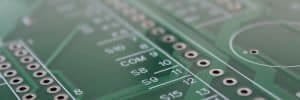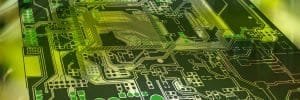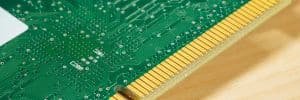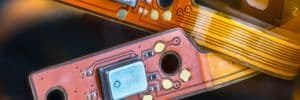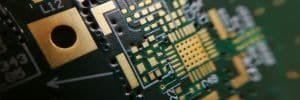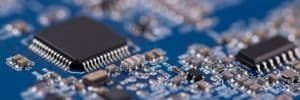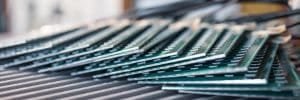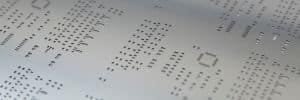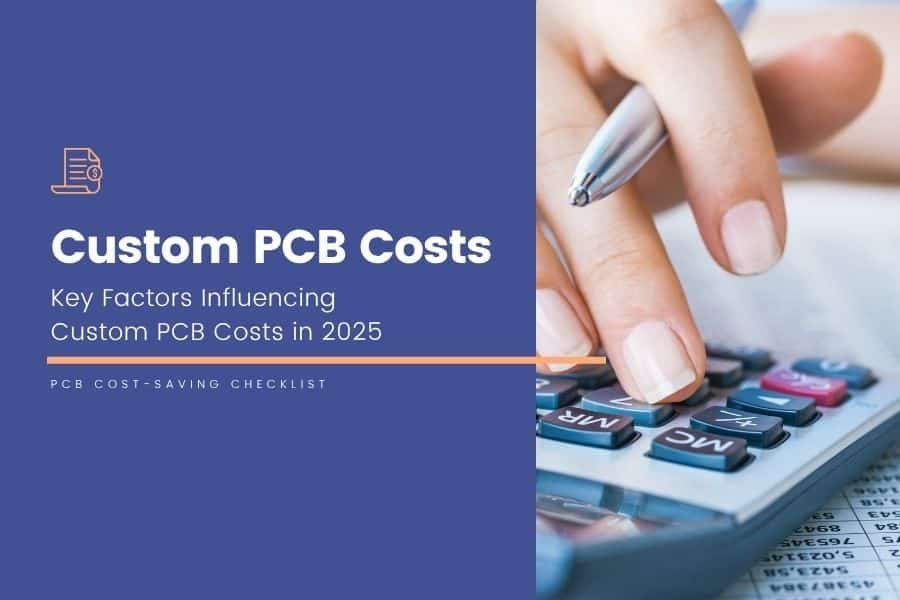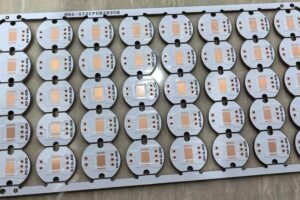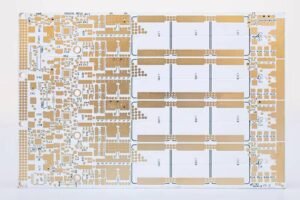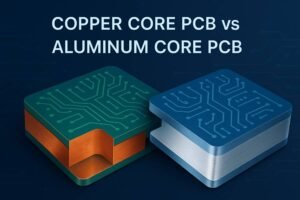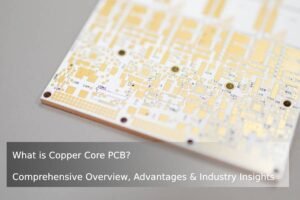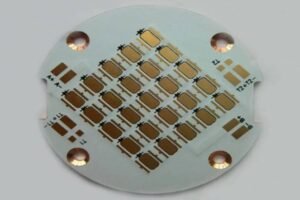Table of Contents
Introduction
In 2025, custom PCBs continue to be the backbone of modern electronics, powering everything from IoT devices and electric vehicles to medical equipment and 5G infrastructure. However, with rising material costs, supply chain complexities, and evolving design requirements, managing PCB expenses is a top concern for engineers, startups, and manufacturers alike. How can you balance performance, quality, and budget in today’s competitive market? This comprehensive guide reveals the key factors driving custom PCB costs and shares actionable strategies to save up to 30% without compromising reliability.
The cost of a custom PCB can vary widely—from $5 for a simple prototype to thousands for a high-density, multi-layer board for aerospace applications. Factors like material selection, layer count, board size, and production volume play a critical role, but emerging trends such as sustainable materials and automated manufacturing are reshaping the cost landscape in 2025. Whether you’re prototyping a new product or scaling production, understanding these cost drivers empowers you to make informed decisions and optimize your budget.
In this guide, we’ll explore:
- The major factors impacting PCB pricing, from substrates to certifications.
- How material choices like FR-4 or Rogers affect costs and performance.
- Practical methods to calculate costs for prototypes and high-volume runs.
- Cutting-edge tools like JHYPCB’s online pricing calculator to streamline budgeting.
- Cost-saving strategies to maximize value without sacrificing quality.
- 2025 trends, including eco-friendly materials and automation, shaping PCB costs.
Partner with JHYPCB, a leading Chinese PCB manufacturer, to bring your designs to life with high-quality, cost-effective solutions. Ready to start? Request a free quote at JHYPCB’s Online PCB Quote to kickstart your project.
Major Factors Determining Custom PCB Cost
The cost of custom printed circuit boards hinges on several critical factors that influence both design and manufacturing expenses. Understanding these drivers allows engineers and businesses to optimize their PCB projects for performance and budget in 2025’s dynamic electronics landscape. This section breaks down the primary cost determinants—base material, layer count, board size, production volume, manufacturing processes, trace width, spacing, and certifications—offering technical insights, real-world examples, and actionable tips to guide your decision-making.
1. PCB Base Material
The substrate material forms the foundation of a PCB and significantly impacts its cost and performance. Standard materials like FR-4 are cost-effective, while specialized substrates like Rogers or ceramic cater to high-frequency or high-reliability applications but come at a premium.
- Technical Insight: FR-4, a glass-reinforced epoxy laminate, offers a dielectric constant of ~4.5, suitable for most consumer electronics. Rogers materials, with lower dielectric losses (e.g., 0.0009 for Rogers 4350B), are ideal for RF and microwave circuits but cost 5-10 times more.
- Cost Impact: FR-4 ranges from $1-$10 per square foot, while Rogers can reach $20-$50 per square foot.
- Example: An IoT device using FR-4 for a 4-layer PCB costs $5 per board, while a 5G antenna using Rogers costs $50 per board due to material and handling requirements.
- Tip: Choose FR-4 for prototyping unless your application demands specific electrical or thermal properties.
2. Number of Layers
The number of copper layers in a PCB directly affects its complexity, manufacturing time, and cost. Single- and double-layer boards are economical, while multi-layer boards (4+ layers) increase expenses due to intricate stackups and alignment challenges.
- Technical Insight: Multi-layer boards enable high-density routing and better signal integrity for complex circuits (e.g., DDR memory interfaces). However, each additional layer requires precise lamination and drilling, increasing costs by 20-30% per layer.
- Cost Impact: A 2-layer board may cost $2-$5 per square foot, while an 8-layer board can exceed $15 per square foot.
- Example: A medical device with an 8-layer PCB for signal isolation costs $200 per board, compared to $50 for a 2-layer consumer gadget.
- Tip: Minimize layer count by optimizing routing during the design phase, using tools like Altium Designer to simulate signal performance.
3. Board Size and Dimensions
Larger PCBs require more raw materials and pose manufacturing challenges, such as maintaining precision over larger areas, which drives up costs.
- Technical Insight: Larger boards increase material usage (e.g., copper and substrate) and require advanced equipment for uniform etching and drilling. Boards exceeding 500 sq. cm often incur additional handling fees.
- Cost Impact: A 100 sq. cm board costs $5-$10, while a 500 sq. cm board may cost $30-$50 for the same layer count.
- Example: A 200 sq. cm automotive PCB costs $15 per board, while a 50 sq. cm wearable device PCB costs $4.
- Tip: Optimize board dimensions by consolidating components and using panelization to reduce waste.
4. Production Volume
Economies of scale play a pivotal role in PCB pricing. High-volume orders spread setup costs (e.g., tooling, stencil creation) across more units, reducing per-unit costs.
- Technical Insight: Setup costs, including photolithography masks and programming CNC machines, can range from $100-$500 per design. For low volumes (e.g., 10 units), these costs dominate, while high volumes (e.g., 1,000 units) amortize them.
- Cost Impact: A 4-layer PCB may cost $10 per unit for 10 units but drop to $2 per unit for 1,000 units.
- Example: A startup prototyping 10 PCBs pays $100 total ($10/unit), while a manufacturer ordering 1,000 units pays $2,000 ($2/unit).
- Tip: Combine multiple designs into a single panel for low-volume runs to share setup costs.
5. Manufacturing Processes
Specialized processes like heavy copper plating, controlled impedance, or advanced surface finishes (e.g., ENIG) increase costs due to additional equipment and expertise required.
- Technical Insight: Controlled impedance ensures consistent signal performance for high-speed circuits (e.g., USB 3.0), requiring precise trace geometry and testing. Heavy copper (e.g., 3 oz/ft²) supports high-current applications but increases etching time.
- Cost Impact: Standard processes cost $1-$2 per square foot, while advanced processes add $5-$15 per square foot.
- Example: A power electronics PCB with heavy copper costs $25 per board, compared to $10 for a standard PCB with HASL finish.
- Tip: Avoid specialized processes unless required for performance, and consult your manufacturer for cost-effective alternatives.
6. Minimum Trace Width and Spacing
Finer trace widths and smaller spacing increase manufacturing complexity, requiring advanced equipment and stricter quality control.
- Technical Insight: Traces below 6 mil (0.15 mm) or spacing below 8 mil demand high-precision photolithography, increasing defect risks and costs. High-density interconnect (HDI) designs with microvias are particularly expensive.
- Cost Impact: Standard 8 mil traces cost $1-$2 per square foot, while 4 mil traces add $3-$10 per square foot.
- Example: An HDI PCB for a smartphone with 4 mil traces costs $30 per board, compared to $10 for a standard PCB with 8 mil traces.
- Tip: Use wider traces and spacing where possible, and verify tolerances with your manufacturer early in the design process.
7. Certifications and Testing
Certifications (e.g., UL, IPC-A-600) and additional testing (e.g., thermal cycling, electrical testing) ensure reliability but add costs due to specialized processes and documentation.
- Technical Insight: UL certification verifies fire safety, while IPC standards ensure manufacturing quality. Tests like automated optical inspection (AOI) or X-ray inspection for buried vias increase costs by 10-20%.
- Cost Impact: Certifications and testing add $100-$500 per design, plus $0.50-$2 per board.
- Example: A medical PCB requiring UL certification and X-ray testing costs $300 per design, compared to $50 for a non-certified prototype.
- Tip: Prioritize certifications only for regulated industries (e.g., medical, aerospace) and discuss testing needs with your manufacturer to avoid over-specification.
Cost Impact Summary
| Factor | Cost Impact | Typical Cost Range | Optimization Tip |
|---|---|---|---|
| Base Material | High | $1-$200/sq. ft. (FR-4 vs. Ceramic) | Use FR-4 for non-specialized applications |
| Layer Count | High | $2-$15/sq. ft. (2 vs. 8 layers) | Minimize layers with efficient routing |
| Board Size | Medium | $5-$50/board (100 vs. 500 sq. cm) | Optimize dimensions and panelize |
| Production Volume | High | $2-$10/unit (1,000 vs. 10 units) | Order in bulk for economies of scale |
| Manufacturing Process | Medium | $1-$15/sq. ft. (standard vs. advanced) | Avoid unnecessary specialized processes |
| Trace Width/Spacing | Medium | $1-$10/sq. ft. (8 vs. 4 mil) | Use wider traces where possible |
| Certifications/Testing | Medium | $100-$500/design + $0.50-$2/board | Limit to regulated industries |
Case Study: Balancing Cost and Performance
A startup developing a 5G IoT sensor required a 4-layer PCB (150 sq. cm) with controlled impedance and Rogers material for high-frequency performance. Initial costs were $50 per board for 50 units ($2,500 total), driven by material ($20/sq. ft.) and impedance control ($10/sq. ft.). By switching to FR-4 and relaxing impedance tolerances for non-critical signals, the cost dropped to $15 per board ($750 total), saving 70% while meeting performance needs for prototyping.
Key Takeaways
By carefully evaluating these cost factors, you can make informed decisions to balance performance and budget. Work closely with your PCB manufacturer during the design phase to identify cost-saving opportunities, such as selecting appropriate materials or optimizing layer counts. Tools like Altium Designer or KiCad can help simulate designs to minimize layers and processes without compromising functionality.

Cost of Different PCB Materials
The choice of base material, or substrate, is a pivotal factor in determining the cost and performance of custom PCBs. Each material offers unique electrical, thermal, and mechanical properties tailored to specific applications, from cost-sensitive consumer electronics to high-reliability aerospace systems. In 2025, material costs will be influenced by global supply chain dynamics, sustainability trends, and regional manufacturing variations. This section explores the most common PCB materials—FR-4, Rogers, aluminum, polyimide, and ceramic—detailing their cost ranges, properties, applications, and cost-optimization strategies.
Common PCB Materials and Their Costs
Below is a detailed breakdown of the primary PCB materials, their cost ranges in 2025, and their suitability for various applications.
1. FR-4
- Description: FR-4, a glass-reinforced epoxy laminate, is the industry-standard material due to its affordability, versatility, and reliable performance. It consists of woven fiberglass cloth with an epoxy resin binder, offering a dielectric constant of ~4.2-4.5.
- Cost Range: $1-$10 per square foot, depending on thickness (0.2-3.2 mm), copper weight (1-2 oz/ft²), and quality (standard vs. high-Tg for better thermal stability).
- Properties:
- Dielectric constant: 4.2-4.5 (suitable for low-to-mid-frequency circuits).
- Thermal conductivity: ~0.3 W/m·K (moderate heat dissipation).
- Glass transition temperature (Tg): 130-180°C (high-Tg variants for demanding applications).
- Applications: Consumer electronics (e.g., smartphones, laptops), prototyping, and general-purpose PCBs.
- Cost Drivers: Thicker boards or high-Tg FR-4 (e.g., for automotive use) cost more. Regional supply chain issues in 2025 may increase prices by 5-10%.
- Optimization Tip: Use standard 1.6 mm FR-4 with 1 oz/ft² copper for cost-sensitive projects unless higher thermal or electrical performance is required.
- Example: A 100 sq. cm IoT sensor PCB using 1.6 mm FR-4 costs $2-$3 per board, ideal for low-cost prototyping.
2. Rogers
- Description: Rogers materials are ceramic-filled PTFE substrates designed for high-frequency applications, offering low dielectric loss and stable performance at microwave frequencies.
- Cost Range: $20-$50 per square foot, driven by material composition (e.g., Rogers 4350B, 5880) and thickness (0.5-2 mm).
- Properties:
- Dielectric constant: 2.2-3.5 (e.g., 3.48 for Rogers 4350B), minimizing signal loss.
- Dissipation factor: 0.0009-0.0037, ideal for RF/microwave circuits.
- Thermal conductivity: ~0.7 W/m·K, better than FR-4 but less than aluminum.
- Applications: Wireless communications (e.g., 5G antennas), radar systems, and high-speed digital circuits.
- Cost Drivers: High material costs and specialized manufacturing (e.g., precise impedance control) increase expenses. Supply chain constraints in 2025 may add 5-15% to costs.
- Optimization Tip: Reserve Rogers for applications requiring frequencies above 1 GHz; otherwise, FR-4 with optimized routing can suffice.
- Example: A 5G base station PCB (200 sq. cm) using Rogers 4350B costs $40-$50 per board due to material and impedance requirements.
3. Aluminum
- Description: Aluminum-based PCBs feature a metal core for excellent thermal conductivity, making them ideal for high-power applications requiring heat dissipation.
- Cost Range: $10-$20 per square foot, depending on aluminum thickness (0.8-2 mm) and dielectric layer quality.
- Properties:
- Thermal conductivity: 1-2 W/m·K (5-10x better than FR-4).
- Dielectric constant: ~4.5 (similar to FR-4).
- Mechanical strength: High, suitable for rugged environments.
- Applications: LED lighting, power electronics, and automotive systems (e.g., electric vehicle inverters).
- Cost Drivers: Higher material costs and specialized lamination processes. Thicker aluminum cores increase prices.
- Optimization Tip: Use aluminum only for heat-intensive applications; for moderate thermal needs, FR-4 with thermal vias may be cheaper.
- Example: An LED driver PCB (150 sq. cm) using a 1 mm aluminum core costs $15 per board, compared to $5 for FR-4.
4. Polyimide
- Description: Polyimide is a flexible, high-temperature-resistant film substrate, enabling bendable or conformable PCBs for space-constrained designs.
- Cost Range: $5-$20 per square foot, based on thickness (25-125 µm) and quality (standard vs. high-performance grades).
- Properties:
- Dielectric constant: ~3.5, suitable for flexible circuits.
- Operating temperature: Up to 400°C, ideal for harsh environments.
- Flexibility: Can bend repeatedly without cracking.
- Applications: Wearables, medical implants, and flexible displays.
- Cost Drivers: Higher material costs and complex manufacturing (e.g., roll-to-roll processing). Thinner films are more expensive.
- Optimization Tip: Use polyimide only for flexible or high-temperature applications; rigid FR-4 is more cost-effective for standard designs.
- Example: A wearable fitness tracker PCB (50 sq. cm) using 50 µm polyimide costs $8-$10 per board.
5. Ceramic
- Description: Ceramic substrates (e.g., alumina, aluminum nitride) offer exceptional thermal and electrical performance for extreme conditions.
- Cost Range: $50-$200 per square foot, driven by material purity and manufacturing complexity.
- Properties:
- Thermal conductivity: 20-170 W/m·K (alumina: ~20, AlN: ~170).
- Dielectric constant: 9-10 (alumina), stable at high frequencies.
- Temperature resistance: Up to 1,000°C.
- Applications: Aerospace, medical devices, and high-power RF modules.
- Cost Drivers: Expensive raw materials and precision manufacturing (e.g., laser cutting). Supply shortages in 2025 may increase costs by 10-20%.
- Optimization Tip: Reserve ceramic for mission-critical applications; explore aluminum or high-Tg FR-4 for less demanding needs.
- Example: A satellite RF module PCB (100 sq. cm) using alumina costs $100-$150 per board.
Material Cost Comparison
| Material | Cost per Sq. Ft. | Key Properties | Typical Applications | Cost-Saving Alternative |
|---|---|---|---|---|
| FR-4 | $1-$10 | Versatile, moderate thermal performance | Consumer electronics, prototyping | N/A (baseline) |
| Rogers | $20-$50 | Low dielectric loss, high-frequency | 5G, RF, microwave circuits | FR-4 with optimized routing |
| Aluminum | $10-$20 | High thermal conductivity | LED lighting, automotive | FR-4 with thermal vias |
| Polyimide | $5-$20 | Flexible, high-temperature | Wearables, flexible circuits | FR-4 for rigid designs |
| Ceramic | $50-$200 | Extreme thermal/electrical performance | Aerospace, medical devices | Aluminum or high-Tg FR-4 |
2025 Material Cost Trends
- Sustainable Materials: Bio-based FR-4 and recyclable substrates are gaining traction, costing $2-$12 per square foot. These appeal to eco-conscious industries but add 10-20% to costs.
- Supply Chain Dynamics: Global shortages of high-performance materials (e.g., Rogers, ceramic) may increase prices by 5-15% in 2025, particularly in Asia and North America.
- Regional Variations: Manufacturing in China typically offers 10-20% lower material costs compared to North America or Europe due to economies of scale and local sourcing.
Case Study: Material Selection for a Medical Device
A medical device manufacturer needed a 4-layer PCB (100 sq. cm) for a diagnostic tool operating at 2.4 GHz. Initially, Rogers 4350B was chosen for its low dielectric loss, costing $40 per board. However, by switching to high-Tg FR-4 with optimized impedance control, the cost dropped to $10 per board—a 75% savings—while maintaining acceptable performance for the application. This highlights the importance of aligning material choice with performance needs and budget constraints.
Key Takeaways
Selecting the right PCB material requires balancing cost, performance, and application requirements. FR-4 is the go-to choice for most projects due to its affordability and versatility. For high-frequency, high-power, or flexible designs, specialized materials like Rogers, aluminum, or polyimide are justified, but their costs can be 5-20 times higher. In 2025, consider emerging sustainable materials and consult with your manufacturer to optimize material selection based on regional cost variations and supply chain trends.

Calculating PCB Costs by Size
Area-based pricing is a straightforward and widely used method for estimating custom PCB costs, particularly for prototyping and low-volume production. By calculating costs based on the physical dimensions of the board, this approach offers a quick and accessible way to budget for PCB projects without requiring detailed design specifications. In 2025, advancements in automation and online pricing tools have made area-based pricing even more efficient, enabling engineers and startups to obtain instant cost estimates. This section explores how area-based pricing works, its applications, advantages, limitations, and practical examples to guide cost-effective PCB design.
How Area-Based Pricing Works
Area-based pricing calculates PCB costs by multiplying the board’s surface area (in square centimeters or inches) by a unit price determined by factors such as layer count, material, and manufacturing processes. Manufacturers establish unit prices based on their production capabilities, material costs, and overhead, providing a simple formula for cost estimation.
- Formula:
Total Cost = Board Area (sq. cm or sq. in.) × Unit Price ($/sq. cm or $/sq. in.) - Key Factors Affecting Unit Price:
- Layer Count: More layers increase the unit price due to additional lamination and drilling steps.
- Material: Standard FR-4 is cheaper than high-performance substrates like Rogers or aluminum.
- Processes: Advanced features like controlled impedance or ENIG surface finishes raise the unit price.
- Volume: Small batches (e.g., 1-50 units) have higher unit prices due to setup costs.
- 2025 Context: Automation in PCB manufacturing has reduced unit prices by 5-10% for standard processes, while online calculators streamline the quoting process.
Example Calculation:
For a 4-layer PCB measuring 10 cm × 15 cm with a unit price of $0.05 per square centimeter:
- Board Area = 10 cm × 15 cm = 150 sq. cm
- Total Cost = 150 sq. cm × $0.05/sq. cm = $7.50 per board
If ordering 20 boards, the total cost is $7.50 × 20 = $150.
Unit Price Ranges in 2025
The unit price varies based on design complexity and manufacturing requirements. Below is a table summarizing typical unit prices for different PCB configurations in 2025:
| PCB Type | Layers | Unit Price ($/sq. cm) | Unit Price ($/sq. in.) | Typical Applications |
|---|---|---|---|---|
| Single-Layer | 1 | $0.01-$0.03 | $0.06-$0.19 | Simple circuits, hobby projects |
| Double-Layer | 2 | $0.02-$0.05 | $0.13-$0.32 | Consumer electronics, prototypes |
| 4-Layer | 4 | $0.05-$0.10 | $0.32-$0.65 | IoT devices, industrial controls |
| 6-Layer | 6 | $0.08-$0.15 | $0.52-$0.97 | High-speed digital, automotive |
| 8-Layer+ | 8+ | $0.12-$0.25 | $0.77-$1.61 | Medical, aerospace, 5G modules |
| Advanced Processes* | Varies | +$0.02-$0.10 | +$0.13-$0.65 | Controlled impedance, HDI |
*Advanced processes include heavy copper, microvias, or specialized finishes (e.g., ENIG).
Case Study: Prototyping a Consumer Electronics PCB
A startup developing a smart home device needed a 2-layer PCB (8 cm × 12 cm) for prototyping. The manufacturer quoted $0.03 per square centimeter for standard FR-4 with HASL finish.
- Board Area = 8 cm × 12 cm = 96 sq. cm
- Cost per Board = 96 sq. cm × $0.03 = $2.88
- Total Cost for 10 Boards = $2.88 × 10 = $28.80
By using area-based pricing, the startup quickly estimated costs and iterated designs within a $500 budget, completing three prototype rounds for $86.40.
Advantages of Area-Based Pricing
- Simplicity: Requires only board dimensions and basic specifications, ideal for early-stage designs.
- Speed: Online calculators provide instant quotes, reducing back-and-forth with manufacturers.
- Flexibility: Suitable for a wide range of PCB designs, from simple to moderately complex.
- Cost-Effective for Prototypes: Low setup costs make it ideal for small batches (1-100 units).
Limitations of Area-Based Pricing
- Limited Accuracy for Complex Designs: Does not account for advanced features like microvias or high-density interconnects (HDI), which require detailed cost calculations.
- Volume Sensitivity: Less cost-effective for high-volume orders, where setup costs are amortized.
- Regional Variations: Unit prices vary by region (e.g., 10-20% lower in Asia due to economies of scale).
- Oversimplification: May overlook costs for certifications, testing, or specialized materials.
Practical Applications
Area-based pricing is best suited for:
- Prototyping: Quick cost estimates for initial designs or proof-of-concept boards.
- Low-Volume Production: Small batches (10-100 units) for startups or niche products.
- Standard Designs: PCBs with standard materials (e.g., FR-4) and processes (e.g., HASL finish).
Example Scenario: An engineer designing a 4-layer industrial control board (15 cm × 20 cm) uses an online calculator to estimate costs. At $0.08 per square centimeter:
- Board Area = 15 cm × 20 cm = 300 sq. cm
- Cost per Board = 300 sq. cm × $0.08 = $24
- Total Cost for 5 Boards = $24 × 5 = $120
This estimate helped the engineer adjust board size to 12 cm × 15 cm (180 sq. cm), reducing costs to $14.40 per board ($72 total), saving 40%.
2025 Trends in Area-Based Pricing
- Automation: Automated manufacturing has lowered unit prices for standard PCBs by 5-10%, making prototyping more affordable.
- Online Calculators: Advanced tools in 2025 integrate with design software (e.g., KiCad, Altium), allowing real-time cost adjustments based on board dimensions.
- Sustainability: Eco-friendly FR-4 options may add $0.01-$0.02 per square centimeter but appeal to green-conscious markets.
Key Takeaways
Area-based pricing offers a simple, fast, and cost-effective way to estimate PCB costs for prototypes and low-volume orders. By understanding unit price factors like layer count and manufacturing processes, you can optimize board dimensions to stay within budget. For complex or high-volume projects, consult your manufacturer for detailed cost calculations to ensure accuracy. In 2025, leverage online tools and automation to streamline the quoting process and reduce prototyping costs.

Detailed PCB Cost Calculations
For high-volume production or complex custom PCB designs, detailed cost calculations provide a more accurate estimate than area-based pricing by accounting for specific design and manufacturing requirements. This method considers multiple cost components—raw materials, layer count, manufacturing processes, drilling, tooling, labor, and overhead—offering a comprehensive view of expenses. In 2025, advancements in automation and supply chain dynamics further influence these costs, making detailed calculations essential for optimizing large-scale PCB projects. This section explores the detailed cost calculation process, its components, applications, and strategies to balance cost and performance.
The Detailed Cost Calculation Process
Detailed cost calculations involve breaking down all factors contributing to PCB production costs. Manufacturers analyze design specifications (e.g., Gerber files, bill of materials) to estimate expenses accurately, ensuring alignment with performance and budget goals.
Key Cost Components
- Raw Material Costs (35-45% of total cost):
- Includes substrates (e.g., FR-4, Rogers) and copper-clad laminates.
- Cost Drivers: Material type, thickness, and copper weight (e.g., 1 oz/ft² vs. 3 oz/ft²).
- Example: A 4-layer FR-4 board (150 sq. cm, 1.6 mm thick, 1 oz/ft² copper) costs $2-$3 in materials per board.
- Layer Count (25-35% of total cost):
- More layers increase lamination, drilling, and alignment costs.
- Cost Drivers: Number of layers and stackup complexity (e.g., blind/buried vias).
- Example: An 8-layer board costs $10-$15 per square foot vs. $3-$5 for a 2-layer board.
- Manufacturing Processes (15-25% of total cost):
- Includes surface finishes (e.g., HASL, ENIG), impedance control, or heavy copper plating.
- Cost Drivers: Specialized processes requiring advanced equipment or expertise.
- Example: ENIG finish adds $2-$5 per square foot compared to HASL.
- Drill Costs (5-10% of total cost):
- Covers via and hole drilling, including through-holes, microvias, and blind/buried vias.
- Cost Drivers: Number, size, and type of holes (e.g., microvias cost 2-3x more than standard vias).
- Example: A board with 500 microvias costs $1-$2 more per board than one with 100 standard vias.
- Tooling and Setup Costs (5-10% of total cost, amortized over volume):
- Includes photolithography masks, stencils, and CNC programming.
- Cost Drivers: Design complexity and production volume (lower volumes increase per-unit setup costs).
- Example: Tooling for a new design costs $200-$500, spread across the order.
- Labor Costs (5-15% of total cost):
- Covers skilled labor for fabrication, assembly, and quality control.
- Cost Drivers: Regional labor rates (e.g., lower in Asia) and automation level.
- Example: Labor in China costs 10-20% less than in North America.
- Overhead and Profit Margins (5-10% of total cost):
- Includes facility costs, equipment maintenance, and manufacturer margins.
- Cost Drivers: Manufacturer scale and efficiency.
- Example: Overhead adds $0.50-$1 per board for standard orders.
Typical Cost Breakdown in 2025
| Cost Component | Percentage of Total Cost | Typical Cost Range (4-Layer, 150 sq. cm) | Optimization Tip |
|---|---|---|---|
| Raw Materials | 35-45% | $2-$5 per board | Use standard FR-4, minimize thickness |
| Layer Count | 25-35% | $3-$7 per board | Optimize routing to reduce layers |
| Manufacturing Processes | 15-25% | $2-$5 per board | Avoid unnecessary advanced finishes |
| Drill Costs | 5-10% | $0.50-$2 per board | Minimize via count and complexity |
| Tooling/Setup | 5-10% | $0.50-$2 per board (for 1,000 units) | Increase volume to amortize costs |
| Labor Costs | 5-15% | $0.50-$2 per board | Leverage automation, choose low-cost regions |
| Overhead/Profit | 5-10% | $0.50-$1 per board | Compare multiple manufacturers |
Case Study: High-Volume Automotive PCB
An automotive electronics company needed 10,000 6-layer PCBs (200 sq. cm) for an electric vehicle control module. The detailed cost breakdown was:
- Raw Materials: $4 per board (FR-4, 1.6 mm, 1 oz/ft² copper) = $40,000
- Layer Count: $6 per board (6 layers, standard stackup) = $60,000
- Manufacturing Processes: $3 per board (ENIG finish, impedance control) = $30,000
- Drill Costs: $1 per board (200 standard vias) = $10,000
- Tooling/Setup: $500 total (amortized to $0.05 per board) = $500
- Labor: $1 per board (automated production in Asia) = $10,000
- Overhead/Profit: $0.95 per board = $9,500
- Total Cost: $16 per board × 10,000 = $160,000
By switching to a 4-layer design with optimized routing, the cost dropped to $12 per board ($120,000 total), saving 25% while meeting performance requirements.
Advantages of Detailed Cost Calculations
- High Accuracy: Captures all cost components, ideal for complex or high-volume orders.
- Cost Optimization: Identifies savings opportunities (e.g., reducing layers or vias).
- Scalability: Enables competitive pricing for large production runs.
- Transparency: Provides a clear breakdown for budgeting and negotiations.
Limitations of Detailed Cost Calculations
- Complex Process: Requires detailed design files (e.g., Gerber, BOM) and manufacturer collaboration.
- Higher Upfront Effort: Time-intensive quoting process compared to area-based pricing.
- Less Practical for Prototypes: Setup costs dominate in low-volume orders, making area-based pricing more suitable.
Practical Applications
Detailed cost calculations are best for:
- High-Volume Production: Orders of 1,000+ units where setup costs are amortized.
- Complex Designs: PCBs with advanced features (e.g., HDI, microvias, or controlled impedance).
- Regulated Industries: Automotive, medical, or aerospace projects requiring certifications.
Example Scenario: A 5G module manufacturer needed 5,000 8-layer PCBs (100 sq. cm) with microvias and ENIG finish. Detailed calculations revealed a cost of $20 per board ($100,000 total). By reducing microvias and switching to HASL finish, costs dropped to $15 per board ($75,000 total), saving 25%.
2025 Trends in Detailed Cost Calculations
- Automation: Automated manufacturing reduces labor costs by 10-15%, lowering per-board costs for high-volume orders.
- Supply Chain Dynamics: Material shortages may increase raw material costs by 5-10%, necessitating precise calculations to avoid overruns.
- Digital Tools: Online platforms in 2025 integrate Gerber file analysis, providing real-time detailed cost estimates.
Key Takeaways
Detailed cost calculations offer unparalleled accuracy for high-volume or complex PCB projects by accounting for materials, layers, processes, and more. In 2025, leverage automation and digital tools to streamline the process and optimize costs. Collaborate with your manufacturer early to refine design specifications, reduce unnecessary features, and achieve economies of scale for cost-effective production.
Using Online PCB Pricing Calculators
Online PCB pricing calculators have revolutionized the way engineers, startups, and manufacturers estimate custom PCB costs. These web-based tools provide instant cost estimates by processing key design parameters, such as board size, layer count, material, and quantity, eliminating the need for lengthy quoting processes. In 2025, advancements in automation, artificial intelligence, and integration with design software have made these calculators more accurate and user-friendly, empowering users to explore cost scenarios efficiently. This section delves into how online PCB pricing calculators work, their benefits, limitations, and practical applications for prototyping and production.
How Online PCB Pricing Calculators Work
Online PCB pricing calculators are intuitive web interfaces that collect design specifications and generate real-time cost estimates using sophisticated algorithms. Users input parameters, and the tool calculates costs based on manufacturing data, material prices, and production capabilities.
Key Input Parameters
- Board Dimensions: Length and width (e.g., 10 cm × 15 cm) to calculate surface area.
- Layer Count: Number of copper layers (e.g., 2, 4, or 8 layers).
- Material: Substrate type (e.g., FR-4, Rogers, aluminum).
- Quantity: Number of boards (e.g., 10 for prototypes, 1,000 for production).
- Manufacturing Processes: Surface finishes (e.g., HASL, ENIG), impedance control, or via types.
- Lead Time: Standard (e.g., 7-10 days) or expedited (e.g., 2-3 days).
Calculation Process
- The calculator multiplies the board area by a unit price (based on layers and processes) and adjusts for quantity, material, and additional features.
- Algorithms factor in 2025 manufacturing costs, including material price fluctuations (e.g., 5-10% increase due to supply chain constraints) and labor savings from automation (10-15% reduction).
- Some calculators integrate with design software (e.g., KiCad, Altium Designer), parsing Gerber files for precise cost estimation.
Example: For a 4-layer FR-4 PCB (10 cm × 15 cm, 150 sq. cm) with HASL finish, 10 units, and standard lead time, a calculator might estimate:
- Unit Price: $0.05/sq. cm
- Cost per Board = 150 sq. cm × $0.05 = $7.50
- Total Cost = $7.50 × 10 = $75
Typical Calculator Inputs and Outputs
| Parameter | Example Input | Impact on Cost | Notes |
|---|---|---|---|
| Board Size | 10 cm × 15 cm | Larger size increases material cost | Optimize dimensions to reduce waste |
| Layer Count | 4 layers | More layers raise unit price | 4-layer: $0.05-$0.10/sq. cm |
| Material | FR-4 | Specialty materials increase cost | FR-4: $1-$10/sq. ft., Rogers: $20-$50 |
| Quantity | 10 units | Higher volumes lower per-unit cost | Setup costs dominate low volumes |
| Surface Finish | HASL | ENIG adds $2-$5/sq. ft. | Choose HASL for cost savings |
| Lead Time | 7 days | Expedited adds 20-50% | Plan ahead to avoid rush fees |
Case Study: Prototyping with an Online Calculator
A startup designing a wearable fitness tracker needed a 2-layer PCB (5 cm × 5 cm, 25 sq. cm) for prototyping. Using an online calculator, they input:
- Material: FR-4 (1.6 mm, 1 oz/ft² copper)
- Quantity: 20 units
- Surface Finish: HASL
- Lead Time: 10 days
The calculator estimated $0.03/sq. cm, resulting in: - Cost per Board = 25 sq. cm × $0.03 = $0.75
- Total Cost = $0.75 × 20 = $15
By adjusting to 50 units, the cost per board dropped to $0.60 ($30 total), saving 20%. The calculator’s real-time feedback allowed the startup to iterate designs within a $100 budget.
Advantages of Online PCB Pricing Calculators
- Real-Time Estimates: Instant quotes eliminate delays in traditional quoting processes.
- Accessibility: Available 24/7 from any internet-connected device, ideal for global teams.
- Design Exploration: Users can test scenarios (e.g., 2 vs. 4 layers) to optimize costs.
- Transparency: Clear breakdowns foster trust and simplify budgeting.
- Integration: 2025 calculators often sync with design tools, streamlining workflows.
Limitations of Online PCB Pricing Calculators
- Limited Precision for Complex Designs: May not fully account for advanced features like microvias or HDI.
- Input Errors: Incorrect parameters (e.g., wrong board size) lead to inaccurate quotes.
- Verification Required: Final costs often need manufacturer confirmation, especially for high-volume or specialized orders.
- Regional Variations: Prices may differ by region (e.g., 10-20% lower in Asia due to economies of scale).
Practical Applications
Online PCB pricing calculators are ideal for:
- Prototyping: Quick estimates for small batches (1-100 units) to support iterative design.
- Cost Comparison: Evaluating trade-offs between materials, layers, or quantities.
- Early-Stage Budgeting: Helping startups and engineers plan projects without detailed quotes.
Example Scenario: An engineer designing a 6-layer PCB (12 cm × 10 cm, 120 sq. cm) for an IoT device tested options in a calculator:
- Option 1: 6 layers, FR-4, ENIG, 50 units = $12/board ($600 total).
- Option 2: 4 layers, FR-4, HASL, 50 units = $8/board ($400 total).
Switching to 4 layers saved 33%, guiding the design toward a cost-effective solution.
2025 Trends in Online PCB Pricing Calculators
- AI Integration: AI-driven calculators in 2025 analyze design files (e.g., Gerber, ODB++) for more accurate estimates, reducing errors by 10-15%.
- Design Software Sync: Tools integrate with KiCad, Altium, and Eagle, allowing real-time cost updates during design.
- Sustainability Metrics: Some calculators include eco-friendly material options (e.g., bio-based FR-4), adding $0.01-$0.02/sq. cm but appealing to green markets.
- Mobile Optimization: Enhanced mobile interfaces improve accessibility for on-the-go engineers.
Key Takeaways
Online PCB pricing calculators provide a fast, accessible way to estimate custom PCB costs, particularly for prototypes and low-volume orders. By inputting key parameters like board size, layer count, and material, users can explore cost scenarios and optimize designs. In 2025, AI integration and design software compatibility enhance accuracy and usability. For complex or high-volume projects, verify calculator estimates with manufacturers to ensure precision.
2025 PCB Cost Trends
The PCB industry is evolving rapidly in 2025, driven by global supply chain shifts, sustainability demands, and technological advancements. These trends significantly influence custom PCB costs, impacting material prices, manufacturing processes, and production strategies. Understanding these dynamics empowers engineers and businesses to anticipate cost fluctuations and optimize their PCB projects. This section explores key 2025 PCB cost trends—supply chain challenges, sustainable materials, automation, regional cost variations, and advanced manufacturing processes—providing insights and strategies to navigate the changing landscape.
1. Supply Chain Challenges
Global supply chain disruptions continue to affect PCB production in 2025, particularly for high-performance materials like Rogers and ceramic substrates.
- Impact on Costs: Shortages of raw materials (e.g., copper, PTFE) increase prices by 5-15%, especially for specialty substrates. For example, Rogers 4350B costs rose from $20-$50 to $23-$58 per square foot in some regions.
- Technical Insight: Supply constraints stem from increased demand for 5G, IoT, and electric vehicle (EV) applications, coupled with limited mining and refining capacity for critical materials like copper.
- Example: A 5G module manufacturer faced a 10% cost increase for a 4-layer Rogers PCB (100 sq. cm), raising per-board costs from $40 to $44.
- Strategy: Lock in material contracts early or explore alternative substrates (e.g., high-Tg FR-4) to mitigate price volatility.
2. Sustainable Materials
Growing demand for eco-friendly PCBs is driving adoption of bio-based FR-4, recyclable substrates, and halogen-free materials, aligning with environmental regulations and customer preferences.
- Impact on Costs: Sustainable materials add $0.01-$0.02 per square centimeter ($0.65-$1.29 per square foot) to costs, a 10-20% premium over standard FR-4.
- Technical Insight: Bio-based FR-4 uses renewable resins, maintaining similar dielectric properties (4.2-4.5) but requiring specialized processing. Halogen-free materials reduce environmental impact but increase lamination costs.
- Example: A consumer electronics company switched to bio-based FR-4 for a 2-layer PCB (150 sq. cm), increasing costs from $3 to $3.45 per board but gaining eco-certifications for European markets.
- Strategy: Use sustainable materials for projects targeting green-conscious markets (e.g., Europe, North America) but revert to standard FR-4 for cost-sensitive applications.
3. Automation in Manufacturing
Automation technologies, including robotic assembly and AI-driven quality control, are reducing labor costs and improving production efficiency in 2025.
- Impact on Costs: Automation lowers labor costs by 10-15%, reducing per-board costs by $0.50-$2 for high-volume orders (1,000+ units).
- Technical Insight: Automated optical inspection (AOI) and robotic pick-and-place systems minimize human error, cutting rework costs by 5-10%. AI optimizes panelization, reducing material waste.
- Example: A high-volume 4-layer PCB order (10,000 units, 100 sq. cm) saw costs drop from $5 to $4.25 per board due to automated production, saving $7,500.
- Strategy: Partner with manufacturers using automated systems for high-volume runs to maximize cost savings.
4. Regional Cost Variations
Manufacturing costs vary significantly by region due to differences in labor rates, material sourcing, and economies of scale.
- Impact on Costs: PCB production in Asia (e.g., China, Taiwan) is 10-20% cheaper than in North America or Europe due to lower labor costs and local material supply chains.
- Technical Insight: Asian manufacturers benefit from high-volume production and proximity to copper and substrate suppliers, reducing material costs by 5-10%. Western regions face higher overhead and regulatory compliance costs.
- Example: A 6-layer PCB (200 sq. cm) costs $15 per board in China vs. $18 in the U.S., saving $3,000 on a 1,000-unit order.
- Strategy: Consider Asian manufacturers for cost-sensitive projects, but ensure quality certifications (e.g., IPC-A-600) for reliability.
5. Advanced Manufacturing Processes
Emerging processes like high-density interconnect (HDI), microvias, and additive manufacturing are increasing in demand but add complexity and cost.
- Impact on Costs: HDI and microvias increase costs by $2-$10 per square foot due to precision equipment and additional processing steps.
- Technical Insight: HDI designs use finer traces (e.g., 3-4 mil) and microvias (≤0.15 mm), requiring laser drilling and advanced photolithography. Additive manufacturing reduces waste but involves costly equipment.
- Example: An HDI PCB for a smartphone (50 sq. cm) with microvias costs $20 per board vs. $10 for a standard 4-layer design, a 100% increase.
- Strategy: Reserve HDI and additive processes for compact, high-performance designs; use standard processes for cost-sensitive projects.
2025 Cost Trend Summary
| Trend | Cost Impact | Typical Cost Change | Strategy |
|---|---|---|---|
| Supply Chain Challenges | +5-15% | $0.02-$0.05/sq. cm for specialty materials | Lock in contracts, use alternatives |
| Sustainable Materials | +10-20% | $0.01-$0.02/sq. cm | Use for eco-conscious markets |
| Automation | -10-15% (labor) | -$0.50-$2/board (high volume) | Prioritize automated manufacturers |
| Regional Variations | -10-20% (Asia vs. West) | -$1-$3/board (Asia) | Choose Asia for cost savings |
| Advanced Processes | +$2-$10/sq. ft. | +$0.50-$2.50/board (HDI, microvias) | Limit to high-performance designs |
Case Study: Cost Optimization for an Electric Vehicle PCB
An electric vehicle (EV) manufacturer needed 5,000 6-layer PCBs (150 sq. cm) for battery management systems. Initial costs using standard FR-4 and manual assembly were $18 per board ($90,000 total). By leveraging 2025 trends:
- Switched to an automated Asian manufacturer, reducing labor costs by 15% ($2/board).
- Used bio-based FR-4 to meet EU regulations, adding $0.30/board.
- Avoided HDI by optimizing routing, saving $1/board.
Final cost: $15.30 per board ($76,500 total), a 15% savings, balancing performance and regulatory compliance.
Key Takeaways
In 2025, PCB costs are shaped by supply chain dynamics, sustainable materials, automation, regional variations, and advanced processes. Supply shortages may increase material costs, while automation and Asian manufacturing offer savings. Sustainable materials cater to eco-conscious markets but add a premium. By understanding these trends, you can strategically select materials, processes, and manufacturing regions to optimize costs without compromising quality. Stay informed about market dynamics and collaborate with manufacturers to align designs with cost-effective solutions.
How to Reduce Custom PCB Costs
Reducing the cost of custom PCBs without compromising quality or performance is a critical goal for engineers, startups, and manufacturers in 2025. By optimizing design, leveraging economies of scale, selecting cost-effective materials, streamlining manufacturing processes, and managing lead times, you can achieve significant savings. This section outlines actionable strategies to minimize PCB expenses, supported by technical insights, real-world examples, and 2025 industry trends, empowering you to balance budget and functionality.
1. Optimize PCB Design for Cost-Effectiveness
Simplifying the PCB layout reduces manufacturing complexity and costs while maintaining performance.
- Technical Insight: Minimizing layer count, relaxing trace width/spacing tolerances, and optimizing component placement reduce material and processing costs. For example, reducing a 6-layer design to 4 layers by efficient routing can save 20-30% on lamination and drilling.
- Cost Savings: 10-30% per board by reducing layers or complexity.
- Example: A 6-layer IoT PCB (100 sq. cm) costing $12 per board was redesigned to 4 layers using tools like Altium Designer, dropping costs to $8 per board, a 33% savings.
- Strategy: Use design software (e.g., KiCad, Eagle) to simulate signal integrity and optimize routing, avoiding unnecessary layers or tight tolerances (e.g., >6 mil traces/spacing).
2. Leverage Economies of Scale
Ordering higher production volumes spreads setup costs (e.g., tooling, stencils) across more units, lowering per-unit costs.
- Technical Insight: Setup costs, such as photolithography masks ($100-$500 per design), dominate low-volume orders. High volumes (1,000+ units) amortize these costs, reducing per-unit expenses by 30-50%.
- Cost Savings: $1-$5 per board for orders exceeding 1,000 units.
- Example: A 4-layer PCB (150 sq. cm) cost $10 per board for 10 units ($100 total) but dropped to $4 per board for 1,000 units ($4,000 total), saving 60%.
- Strategy: Consolidate orders or panelize multiple designs into a single production run to share setup costs.
3. Choose Cost-Effective Materials
Selecting affordable materials like FR-4 over specialty substrates (e.g., Rogers, ceramic) reduces costs for applications with standard performance needs.
- Technical Insight: FR-4 offers a dielectric constant of 4.2-4.5 and thermal conductivity of ~0.3 W/m·K, sufficient for most consumer electronics. Specialty materials like Rogers (dielectric constant ~3.5) are 5-10x more expensive.
- Cost Savings: $5-$40 per square foot by using FR-4 instead of Rogers or ceramic.
- Example: A wireless device PCB (100 sq. cm) using Rogers ($40/board) was redesigned with high-Tg FR-4 ($10/board), saving 75%.
- Strategy: Evaluate performance requirements early and use FR-4 with thermal vias or optimized routing for cost-sensitive projects.
4. Optimize PCB Stackup and Routing
Efficient stackup and routing minimize layer count and material usage, reducing manufacturing complexity.
- Technical Insight: A balanced stackup (e.g., symmetrical layers) reduces warpage and lamination costs. Advanced routing techniques, like differential pair optimization, can fit complex circuits into fewer layers.
- Cost Savings: 15-25% per board by reducing layers or vias.
- Example: An automotive PCB (200 sq. cm) reduced from 8 to 6 layers by optimizing routing, lowering costs from $20 to $15 per board, a 25% savings.
- Strategy: Collaborate with manufacturers to design cost-efficient stackups and use software like Altium for via minimization.
5. Explore Cost-Effective Manufacturing Processes
Avoiding specialized processes like heavy copper plating, microvias, or advanced surface finishes (e.g., ENIG) reduces costs.
- Technical Insight: Standard processes like HASL finish cost $1-$2 per square foot, while ENIG or microvias add $2-$10 per square foot due to precision equipment. Subtractive manufacturing is cheaper than semi-additive for HDI designs.
- Cost Savings: $1-$5 per board by using standard finishes and processes.
- Example: A power electronics PCB (150 sq. cm) switched from ENIG to HASL, reducing costs from $15 to $12 per board, a 20% savings.
- Strategy: Reserve advanced processes for high-performance applications and consult manufacturers for cost-effective alternatives.
6. Manage Lead Times Effectively
Planning ahead to avoid rush orders minimizes expedited production fees.
- Technical Insight: Rush orders (e.g., 2-3 day lead times) require prioritized scheduling and material procurement, adding 20-50% to costs. Standard lead times (7-10 days) leverage existing production queues.
- Cost Savings: 10-30% per order by choosing standard lead times.
- Example: A prototype order of 20 PCBs (100 sq. cm) cost $200 with a 3-day rush but $150 with a 10-day lead time, saving 25%.
- Strategy: Plan production schedules early and use standard lead times for non-urgent projects.
7. Use Design Software for Cost Optimization
Leveraging PCB design software and panelization tools reduces material waste and setup costs.
- Technical Insight: Tools like EasyEDA or Gerber viewers optimize panelization, fitting multiple boards into a single panel to share setup costs. For example, panelizing four 5 cm × 5 cm boards into a 10 cm × 10 cm panel cuts setup costs by 25%.
- Cost Savings: 10-25% per order through efficient panelization.
- Example: A startup panelized four 25 sq. cm PCBs into one 100 sq. cm panel, reducing setup costs from $100 to $75 per run.
- Strategy: Use free tools like EasyEDA or consult manufacturers for panelization guidelines.
Cost-Saving Strategies Summary
| Strategy | Cost Savings Potential | Example Savings | Implementation Tip |
|---|---|---|---|
| Optimize PCB Design | 10-30% per board | $4/board (6 to 4 layers) | Use design software for routing |
| Leverage Economies of Scale | $1-$5/board (high volume) | $6/board (10 to 1,000 units) | Consolidate orders, panelize designs |
| Cost-Effective Materials | $5-$40/sq. ft. | $30/board (Rogers to FR-4) | Evaluate performance needs early |
| Optimize Stackup/Routing | 15-25% per board | $5/board (8 to 6 layers) | Collaborate with manufacturers |
| Cost-Effective Processes | $1-$5/board | $3/board (ENIG to HASL) | Avoid unnecessary advanced processes |
| Manage Lead Times | 10-30% per order | $50/order (rush to standard) | Plan schedules early |
| Use Design Software | 10-25% per order | $25/run (panelization) | Use tools like EasyEDA for efficiency |
Case Study: Cost Reduction for a Smart Home Device
A startup developing a smart thermostat needed 500 4-layer PCBs (100 sq. cm). Initial costs were $10 per board ($5,000 total) using FR-4, ENIG finish, and a 5-day lead time. By applying cost-saving strategies:
- Reduced to 2 layers with optimized routing ($2/board savings).
- Switched to HASL finish ($1/board savings).
- Extended lead time to 10 days ($1/board savings).
- Panelized designs to share setup costs ($0.50/board savings).
Final cost: $5.50 per board ($2,750 total), a 45% savings, allowing the startup to fund additional prototype iterations.
2025 Trends Supporting Cost Reduction
- Automation: Reduces labor costs by 10-15%, enabling cheaper high-volume production.
- Design Software: Tools like KiCad and Altium integrate cost estimation, helping optimize designs in real time.
- Sustainable Materials: Bio-based FR-4, while slightly more expensive, meets regulatory demands without significant cost increases.
Key Takeaways
Reducing custom PCB costs in 2025 requires strategic design and manufacturing decisions. Simplify layouts, leverage economies of scale, choose affordable materials, and use standard processes to achieve significant savings. Tools like design software and panelization optimize efficiency, while planning lead times avoids rush fees. By applying these strategies, you can balance performance and budget, ensuring cost-effective PCB projects without sacrificing quality.

FAQs on Custom PCB Costs
Navigating the complexities of custom PCB costs can be challenging, especially with evolving manufacturing trends in 2025. This FAQ section addresses common questions about PCB pricing, offering technical insights and practical answers to help engineers, startups, and manufacturers make informed decisions. From material selection to production strategies, these responses clarify cost drivers and optimization techniques.
1. How do I choose the right PCB material for my budget?
Select materials based on performance needs and budget constraints. FR-4 ($1-$10 per square foot) is ideal for standard applications like consumer electronics due to its affordability and dielectric constant of 4.2-4.5. For high-frequency applications (e.g., 5G), Rogers ($20-$50 per square foot) offers low dielectric loss but is costly. Aluminum ($10-$20 per square foot) suits high-power designs with thermal demands.
2. What’s the cost difference between prototyping and production?
Prototyping costs are higher per unit due to setup fees (e.g., $100-$500 for tooling), while high-volume production (1,000+ units) benefits from economies of scale, reducing per-unit costs by 30-50%.
3. Can advanced manufacturing processes increase costs significantly?
Yes, processes like heavy copper plating, microvias, or ENIG surface finishes add $2-$10 per square foot due to specialized equipment and expertise.
4. How do lead times affect custom PCB pricing?
Shorter lead times (e.g., 2-3 days) increase costs by 20-50% due to prioritized scheduling and rushed material procurement. Standard lead times (7-10 days) are more cost-effective.
5. Can simplifying PCB design reduce costs?
Yes, reducing layer count, relaxing trace width/spacing, and optimizing component placement can save 10-30% per board by lowering manufacturing complexity.
6. Do PCB stackup optimizations provide significant cost benefits?
Yes, optimizing stackup and routing can reduce layer count and material usage, saving 15-25% per board.
7. How do regional manufacturing differences impact PCB costs?
Manufacturing in Asia (e.g., China) is 10-20% cheaper than in North America or Europe due to lower labor rates and material sourcing efficiencies.
Conclusion
Navigating custom PCB costs in 2025 demands a strategic approach to balance performance, quality, and budget. From selecting cost-effective materials like FR-4 to optimizing designs and leveraging high-volume production, this guide has outlined key factors and actionable strategies to save up to 30% on your PCB projects. Emerging trends, such as automation and sustainable materials, further empower cost-efficient manufacturing. Whether you’re prototyping an IoT device or scaling production for automotive applications, these insights equip you to make informed decisions. Start your project with confidence by requesting a free quote at JHYPCB’s Online PCB Quote or downloading our PCB Cost-Saving Checklist to streamline your design process. Partner with JHYPCB for high-quality, affordable PCB solutions and bring your innovations to life in 2025.
Related Reading
- Why choose FR4 as the general material of PCB?
- Choosing the right PCB manufacturer and supplier. An ultimate quest that will payback in the future.
- Find Out Now, What Should You Do For Fast PCB Classification?
- 16 Factors Affecting The Cost And Price of Flexible PCB
- Prototype PCB Fabrication Service Price in China
- Why is Flexible PCB so Expensive?
- How To Reduce The PCB Manufacturing Cost?
- UK PCB Prototype Manufacturing: Fast, Affordable, and High-Quality
- How to Make Low Cost PCB Prototypes
- Finding the Right China PCB Manufacturers:5 Vetting Tips
- Flexible PCB Cost: Why It’s More Expensive and How to Reduce It
- Worry-Free Custom PCB Manufacturing – JHYPCB, The Preferred Choice for American Customers

